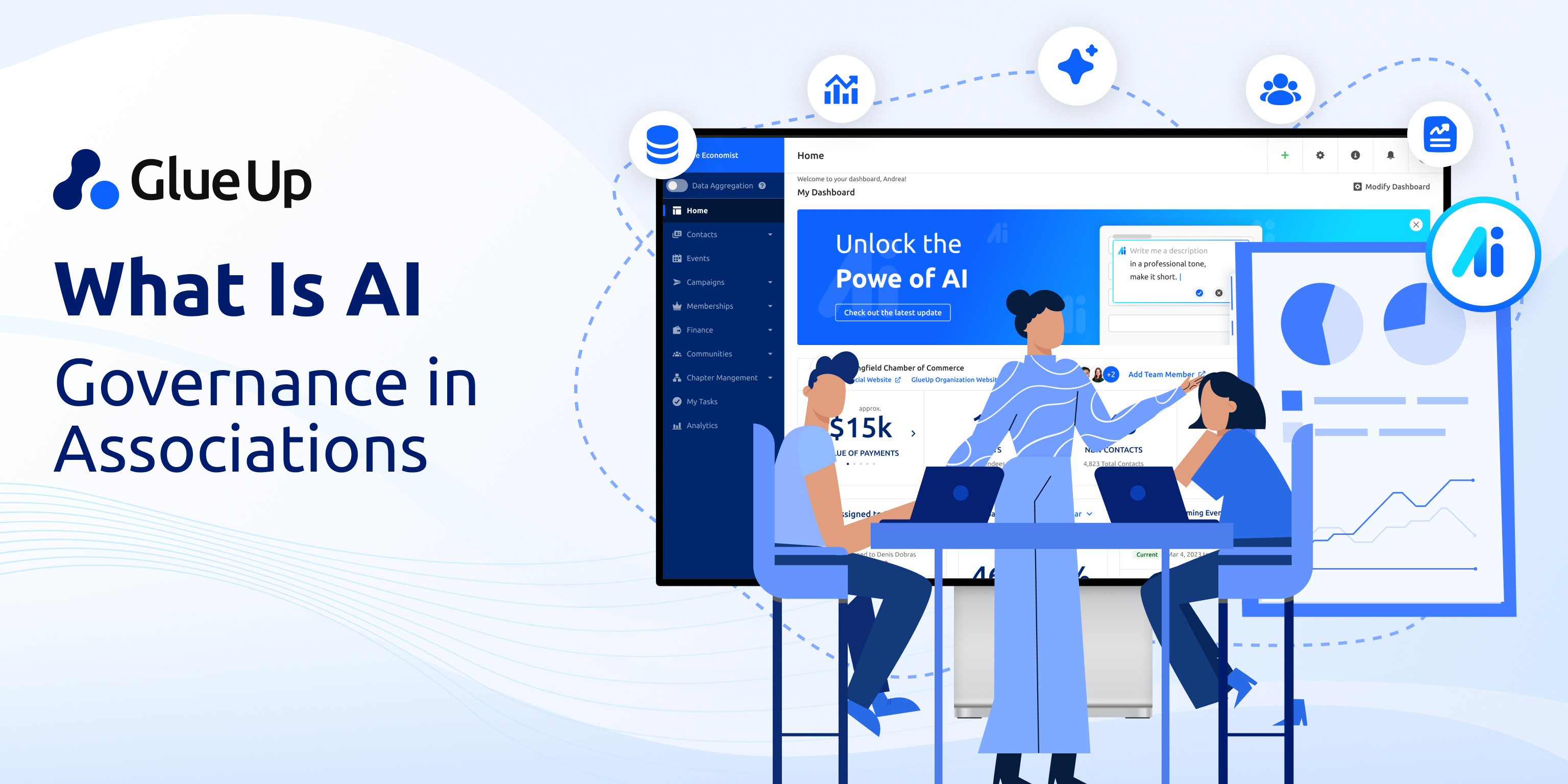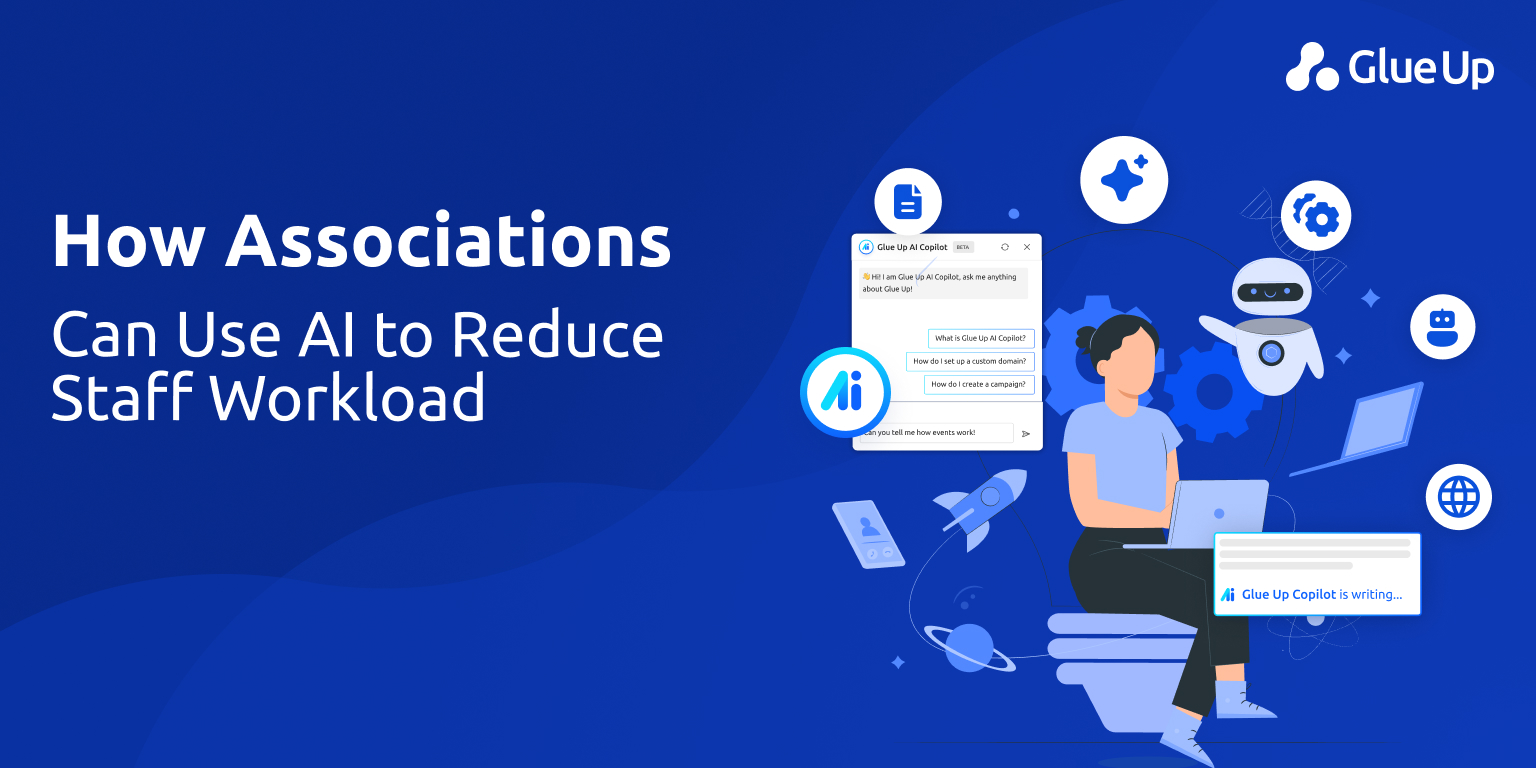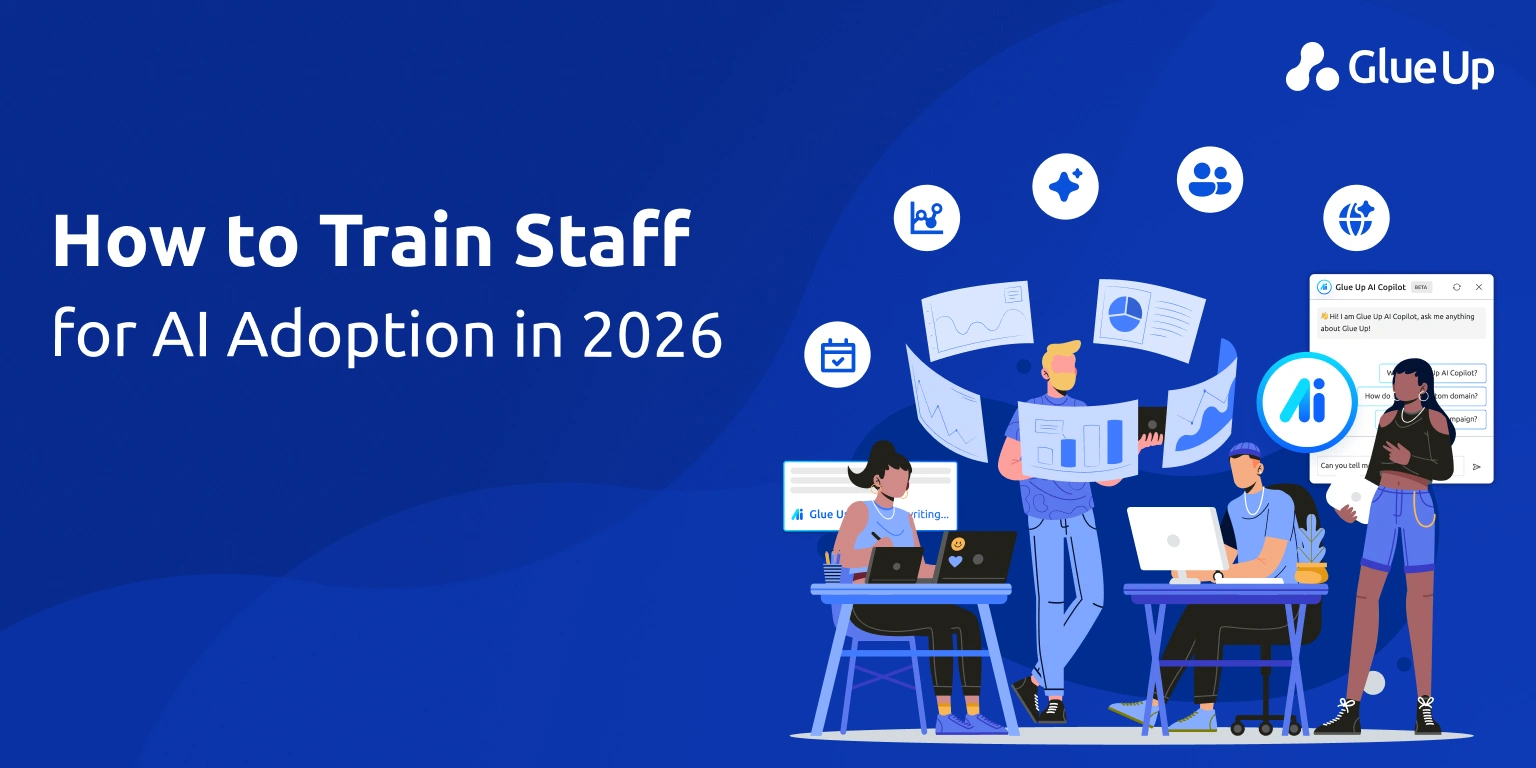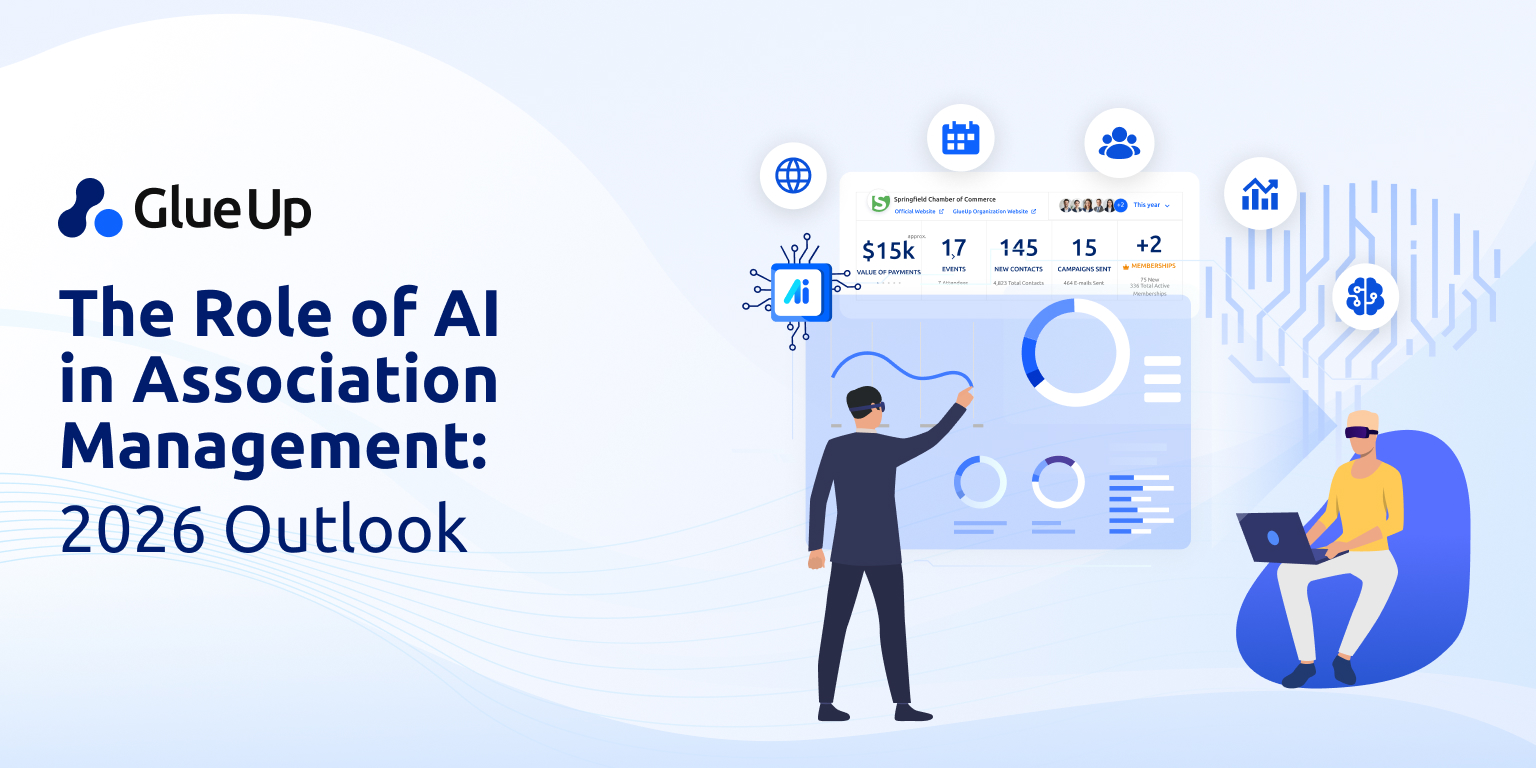
You might not think of it this way, but your association already has an AI governance framework sitting on the boardroom table, even if no one has called it that. Whether you realize it or not, your staff are using artificial intelligence tools for membership outreach, event promotions, accessible-event planning checklists, personalized renewals, even speaker-selection scoring.
When they do, your association’s public voice, member trust, and brand reputation are exposed to AI’s unpredictable logic. The question is not whether you need an AI governance framework. It is whether you have one you can defend in front of your board, your members, and your sponsors.
In this piece I’ll walk you through why an AI governance framework matters for associations today, how to assign roles and responsibilities, what risks must be identified and managed, a ready-to-use policy template, how to audit systems (yes, regularly), and how to train both board and staff.
At each step we’ll tie back to how as an association you can use a solution like Glue Up to make governance practical. It is operational reality. The AI governance framework you build now may be the one thing your board will ask about every quarter for years to come.
Key Takeaways
AI is already in play. Your staff use it daily for event emails, renewals, or accessibility materials, so governance isn’t optional, it’s overdue.
Assign real ownership. Without defined roles: board, CEO, AI governance lead, department heads, staff, you don’t have governance, you have exposure.
Know the six real risks. Data leaks, bias, inaccuracy, accessibility overpromises, copyright confusion, and regulatory gaps, each one can hit trust and revenue.
Policy means nothing without practice. Audit quarterly and train everyone; untrained staff using AI equals unmanaged risk.
Centralize or lose control. Glue Up unifies data, events, and communications so your AI governance framework actually works in the real world.
Quick Reads
Why Associations Must Treat an AI Governance Framework as Board-Level Business
Your board has already ceded control to AI. Maybe you didn’t explicitly approve it, but the moment staff used an AI tool to draft an event email, personalize a sponsorship offer, sketch an accessible event checklist or segment renewal outreach; the association’s voice, brand and data got involved. That’s governance.
Your members are professionals, advocates, volunteers, donors, speakers, exhibitors. They trust you with data about their careers, finances, event participation, health accessibility needs, advocacy activity. Misuse of that data by an AI tool is a mission misstep. It’s your association publishing something under your logo that you don’t fully control.
Meanwhile, boards of associations are increasingly being told that AI is no longer the “IT pilot.” It is risk management. The American Society of Association Executives (ASAE) highlights that associations must develop policies for AI usage, inclusive of member data, content creation and access needs. (ASAE, 2024)
The National Institute of Standards and Technology (NIST) AI Risk Management Framework uses the four verbs govern, map, measure and manage. (NIST, 2023) In plainer language: you govern the operations, you map the tools, you measure the outcomes, and you manage the risks. My point: an AI governance framework is not optional. It is table stakes.
If your board asks: “What’s our AI governance framework?” and you don’t have an easy answer, you’re behind. Worse: you’re open. Because sponsors, funders and regulators are starting to ask about AI policies and disclosures as part of due diligence.
When they see “we don’t have one,” they’ll ask why. Your members will ask why. At its core, an AI governance framework is about preserving trust, maintaining mission integrity, safeguarding revenue and protecting reputation.
Defining Roles and Responsibilities in Your AI Governance Framework
Here’s where many associations get stuck. They know they need an AI governance framework, but they don’t know who owns it or how to operationalize it. So, let’s fix that.
Board / Executive Committee (Strategic Oversight)
Your board must own the strategic dimension of the AI governance framework. It approves the risk appetite: how much AI-driven automation is acceptable, what human sign-offs remain mandatory, what accessibility promises you will, or will not, automate. The board must receive periodic briefings from the person designated to govern AI usage. If the board treats AI like a “project,” the governance fails.
Chief Executive / Executive Director (Accountability Owner)
This person is the final accountable signatory. They approve the AI governance framework, ensure department heads understand it, and escalate to the board when needed. They define “what AI can do” and “what AI cannot do without human review” (for example: legal or medical guidance, scholarship decisions, mobility-access statements).
AI Governance Lead (Operational Control)
This is perhaps the key role. In smaller associations this might be the COO, CTO, Head of Membership, or Manager of Digital Innovation. This person:
Maintains a list registry of all AI tools in use (those approved and those merely “trialled”).
Reviews and approves new AI tool usage.
Coordinates quarterly audits.
Leads incident response when something goes wrong.
Department Heads (Business Use Owners)
Departments such as Membership, Events, Finance, Advocacy, Marketing each must document how they use AI: for renewal outreach, agenda text generation, automated sponsorship matching, accessible event planning communications.
They must train their teams, enforce the policy, and flag odd outputs (bias, hallucination, accessibility misstatement). For example: Events might ask AI to produce an accessible event planning checklist for accessible event venues, but department heads confirm that ramps exist, quiet rooms are staffed, and signage is accurate.
All Staff (Responsible Users)
Each individual using AI tools has to comply. That means disclose when AI is used, never paste in member-sensitive data into public models, escalate when AI behaves weirdly. If your staff are using AI tools like free chatbots without understanding governance, you don’t have an AI governance framework, you have exposure.
Key Risks Your AI Governance Framework Must Cover
Your AI governance framework should map to risk categories the board will instinctively understand. Here are six major ones.
Data Privacy and Confidentiality
Members share data with you because they trust you. When staff inadvertently paste that data into a public AI tool (for example, to rewrite an event invite, or build a sponsorship-match query), you lose control. A credible AI governance framework says: “No member list, billing histories, accommodations notes, or advocacy contacts may be used in unapproved AI tools.”
Bias and Discrimination
If you deploy AI to suggest speaker selections, scholarship recipients, committee invites, or networking matches, you must ask: what historical data is this tool using? Is it replicating bias (geographic, gender, accessibility, race, level of organization)? Associations risk brand damage and legal exposure if such tools operate without human oversight. The AI governance framework must mandate fairness checks for any “human opportunity” decisions.
Inaccuracy / Hallucination
AI can confidently serve content that is incorrect. Imagine you deploy AI to generate a “planning an accessible event” guide, then publish it under your association’s brand, claiming “all sessions will have auto-captioning and service animal relief areas.” If one room lacks captioning, the accessible event venues aren’t properly marked — you have a promise you didn’t guarantee. The AI governance framework must require human review before external publication.
Accessibility and Inclusion Risk
AI can help produce folding checklists and communications for accessible event planning, but it cannot guarantee physical reality. If your association promotes “wheelchair-accessible venue with ramp, captioning, quiet room and alt-text slides” (an accessible event checklist you generated with AI), you must verify it onsite. Not doing so invites member dissatisfaction, legal claims, or worse: mission failure. Your AI governance framework must include accessibility review as a native topic.
Copyright and Intellectual Property
When AI generates content, who owns it? Did it pull heavily from protected sources? If your association is selling AI-written continuing education modules or publishing AI-drafted guides, you must know you have the rights. Your AI governance framework must specify content review, licensing checks and human sign-off.
Regulatory and Contractual Risk
The global regulatory environment is catching up fast. The EU AI Act, ISO/IEC 42001 for AI management systems, and NIST’s AI RMF are all setting expectations. Sponsors may begin asking “Show me your AI governance framework” as part of due diligence. If you can’t, you may lose partnerships, face regulatory scrutiny or funder demands. Your association’s AI governance framework must embed regulatory compliance and contractual readiness.
Sample AI Governance Policy Template Your Association Can Use
Let’s move from theory to something you can drop into your board packet. This is your template, written in plain English and mapped to the AI governance framework we’ve been discussing.
Purpose and Scope
We define what AI we are using (membership personalization, event copy, accessible event planning, advocacy briefings) and what we are not using it for (legal advice, medical guidance, disciplinary decisions, high-stakes personal data decisions).
We say: this policy applies to all association staff, contractors, vendors using AI systems under the association’s brand.
Definitions
AI system: any software, model, or tool that uses machine-learning or generative technology under the association’s control.
Generative AI: AI capable of producing new text, content, or outputs based on prompts.
Member data: personal information, dues history, event attendance, advocacy participation, accommodation needs.
High-risk use: any use of AI where outcomes affect a member’s professional standing, access to services, rights, or reputation.
Roles and Responsibilities
Board: oversight of risk appetite, receives quarterly briefing on AI usage and incidents.
CEO/ED: accountably signs this document, ensures compliance across departments.
AI Governance Lead: maintains AI-tool registry, monitors data flow, approves tool use, coordinates audits.
Department Heads: document AI use, ensure team training, flag escalations.
All Staff: comply with data rules, obtain human review for external content, disclose AI-assisted materials.
Data Use and Privacy Rules
No member or staff personal or financial data may be input into unapproved external AI tools.
Sensitive accommodation or health data cannot be used for AI models unless reviewed and consented.
Data‐sharing for AI purposes must be logged and auditable.
Content Quality and Review
All AI-generated content intended for external publication must be reviewed by a human editor.
Claims about accessibility (e.g., accessible event venues, captioning, service-animal relief areas) generated by AI must be verified by staff onsite or via vendor confirmation.
Bias and Fairness Checks
Any AI tool used to assist with speaker-selection, scholarship or award shortlisting, committee appointments must include a documented fairness and bias review by staff.
If bias is detected, the human reviewer must escalate to the AI Governance Lead.
Incident Response and Reporting
If AI causes a breach (data leak), publishes incorrect or misleading content, or causes accessibility failure, the incident must be logged with date, description, impact, mitigation steps and board notification.
The AI Governance Lead sends summary incident report to CEO and board at next briefing.
Training and Certification
Annual mandatory AI governance training for board and executive staff.
Initial and annual training for all staff using AI tools.
Certification (simple quiz) required before staff can use new AI tools.
Review Cycle
Policy reviews at least every 12 months, or immediately if major AI regulation changes or new internal high-risk use is introduced.
This template is part of your AI governance framework. It is your “policy your board can check this quarter.” Your association doesn’t need a thousand-page manual. You need something board-ready, operational, clear.
How to Audit AI Systems: The Practical Quarterly Check for Associations
You have a policy. You’ve assigned roles. Now you need to audit. The best associations run a “quarterly AI health check” as part of their normal review cycle. Think of it like your internal control review or compliance check. Here’s what to include.
Inventory Audit
List every AI tool currently in use across departments: chatbots, auto-transcription, personalization engines, agenda builders, sponsorship match tools, smart-pricing calculators, accessibility-content generators, renewals-scoring models. If a staffer tried a free AI tool and still uses it, it goes on the list. If it isn’t documented, it didn’t exist for governance. NIST calls this mapping your AI landscape.
Data Exposure Review
Ask: Did anyone paste member lists, billing data, accommodation notes, board documents into an AI tool this quarter? If yes: document it, review the decision, fix the process, notify leadership. You may not need a full GDPR response, but you do need a record.
Bias/Fairness Spot Check
Select a sample of AI-assisted decisions or outputs: e.g., awards nominees (were any groups excluded?), speaker suggestions (did they replicate known biases?), accessible event planning communications (did they claim things you didn’t verify?), renewal outreach personalization (did they treat certain member segments unfairly?). For each, ask: Did we check human oversight? Did we detect any skew? If yes, log corrective action.
Accuracy Review for Published Content
Pull a sample of AI-drafted content that went externally this quarter: newsletters, event invites, advocacy alerts, accessible event checklists, accessible event venue communications. Confirm that someone approved each output, and that no factual inaccuracies or bold claims slipped through. If any did, log the error, correct it, analyze root cause.
Incident Log
Maintain a simple log: date, tool, output, issue, impact, mitigation. At the end of each quarter prepare a short summary (e.g., “Two incidents: staff used unapproved AI tool for speaker outreach; one accessible-venue claim found inaccurate”). Share that in the same packet the board already receives for risk and compliance. When your board sees this alongside cyber-risk, finance, audit: AI governance becomes just another oversight item.
Running this quarterly makes your AI governance framework dynamic and responsive.
Training Your Board and Staff: Making Your AI Governance Framework Real
Having policy and audits won’t matter unless people know what to do. That’s why training is non-negotiable.
Board & Executive Leadership Training
Risk, mission alignment, oversight. Explain how AI is used in membership renewal, event planning, sponsor matching, accessible event communications, and how each of those touches brand and trust. Walk through a scenario: “An AI tool drafted our event accessibility email stating ramps, captioning, quiet rooms. One room lacked captioning. What happens?” Invite discussion: Who is accountable? How do we fix it? What does our AI governance framework say?
Board training is about: you have board liability, you have mission commitments, you have members who expect professionalism. AI is the new vector.
Staff & Department Head Training
Know what you can and cannot paste into AI tools (member lists, billing, accommodation notes).
Always disclose when you use AI (especially if you send something externally).
Don’t treat AI as a magic box. Output still needs human review.
Know how to escalate if something seems biased, wrong, over-promised, or uses inaccessible venue language.
If you’re planning an accessible event, run your accessible event checklist: Tell the AI to draft it, let it help you, but you physically confirm the venue, the ramps, the captioning, the quiet room, the wayfinding signage, alt-text for slides, etc. The AI governance framework says you must.
The training should be short (30–45 minutes), practical, scenario-based, and repeated annually.
If your team is using AI tools with zero training, you don’t have an AI governance framework. You have AI exposure.
Where Glue Up fits in your AI governance framework
You cannot implement a serious AI governance framework when your membership, events, communications, accessibility planning, and data live in ten different apps, spreadsheets and “free AI tools staff found online.” To govern AI you need visibility, control, auditability, and that’s what Glue Up delivers.
With Glue Up, your membership data, event registrations, and other features live in one system. That means your AI Governance Lead has one place to oversee.
Because Glue Up supports personalization, event content, accessible event tools, and communications inside one platform, you reduce the risk of staff pasting sensitive data into unapproved AI tools. That strengthens your data‐use rules inside the AI governance framework.
When it comes to auditing: you can generate logs of what went out, to whom, when, so you can answer the board’s question: “What AI tools did you use this quarter? What outputs? What incidents?” Your AI governance framework becomes practical.
Glue Up gives you the operational spine to apply the AI governance framework you just drafted. Because policy without process is powerless.
We’ll make it clear: we’re not claiming Glue Up is the entire AI governance framework. We’re saying: you need an AI governance framework. Here’s one. Glue Up helps you apply it in your world of associations, events, membership, accessibility, engagement.
Practical Next Steps for This Quarter
Here’s what I want you to do by end of the quarter:
Name your AI Governance Lead
Doesn’t need to be a new hire. Could be your COO, CTO, Head of Membership. But pick a name, give the role visible ownership. Send a short memo: “You own the AI governance framework.” Make it known.
Centralize your core operations
Review where your membership data, event content (including accessible event planning checklists), communications and inclusive outreach processes live. Are they scattered? Are multiple staff using multiple AI tools? Move them into a governed environment like Glue Up this quarter. Why? Because you cannot govern what you can’t see.
Run your first AI-tool inventory
Ask each department: “What AI tools are you using or trialling?” Document them. Check if each is approved. Flag unapproved ones. This gives you the “map” step of the AI governance framework. Do it now.
Schedule your first board briefing on AI governance
Don’t wait for next year. Put it on the board calendar now. The briefing should answer: What is our AI governance framework? Who owns it? What tools do we use? What risks have we identified? What controls are in place? This aligns the board, the CEO and the governance lead.
When you complete these steps, you’ve turned the idea of an AI governance framework from “maybe we will” into “we are.” You show your board you are ahead of the curve; you show your members you are trustworthy; you show your sponsors you are professional.
Final Thought
If you don’t define how AI should behave, AI will define how your association behaves
AI already drafts your agendas, analyzes your renewal data, populates your accessible event planning content, recommends speakers, drafts your event communications, matches sponsors, maybe without you even noticing. If you do not embed an AI governance framework, you are leaving your association’s voice, credibility and member trust to the underlying logic of algorithms you don’t monitor.
The board doesn’t ask “Do we use AI?” They will ask “How do we govern AI?” You want to be ready.
Glue Up gives you the infrastructure, visibility and control to apply that governance framework institution wide. For your members, your mission, your board and your revenue, that matters.
Remember this: If you don’t define how AI should behave in your association, AI will define how your association behaves in public.
Start with naming your AI Governance Lead. Centralize your data and operations. Inventory your AI tools. Schedule your board briefing. And build the AI governance framework your association will depend on. Because the boards of tomorrow will ask you about it, today they’re beginning to ask.



